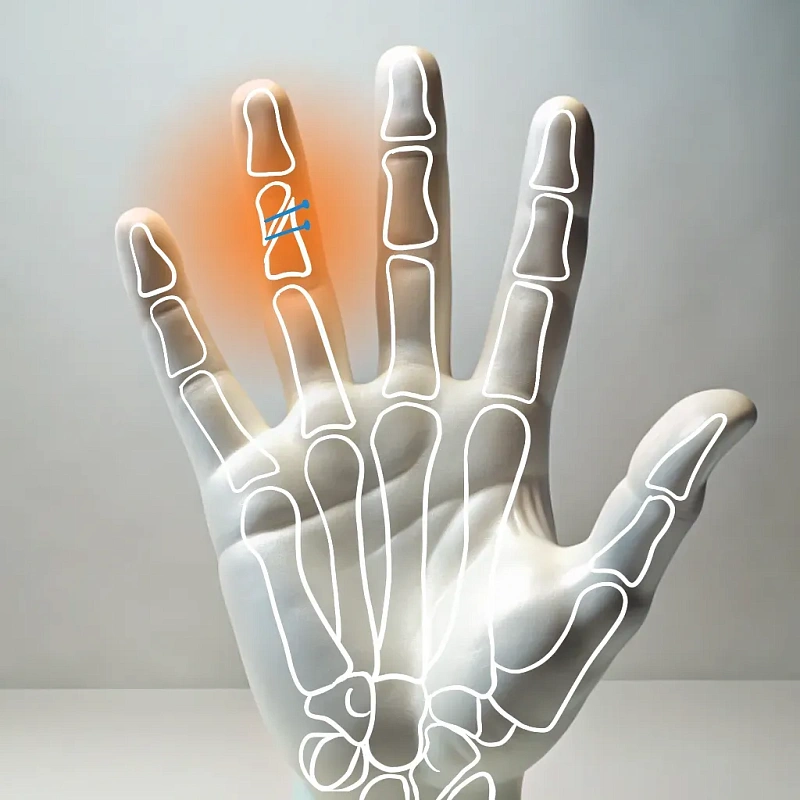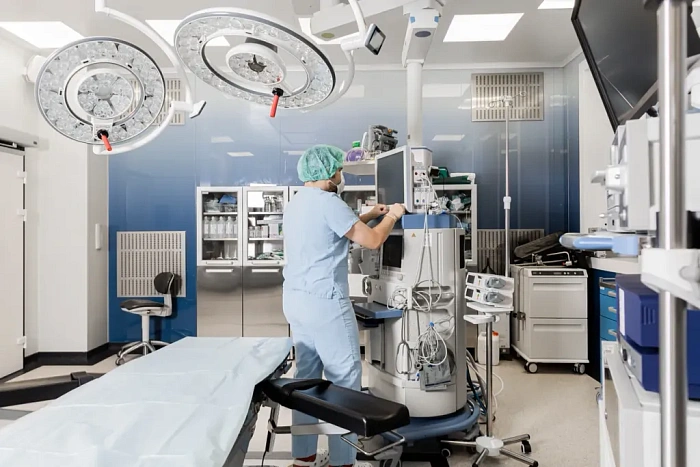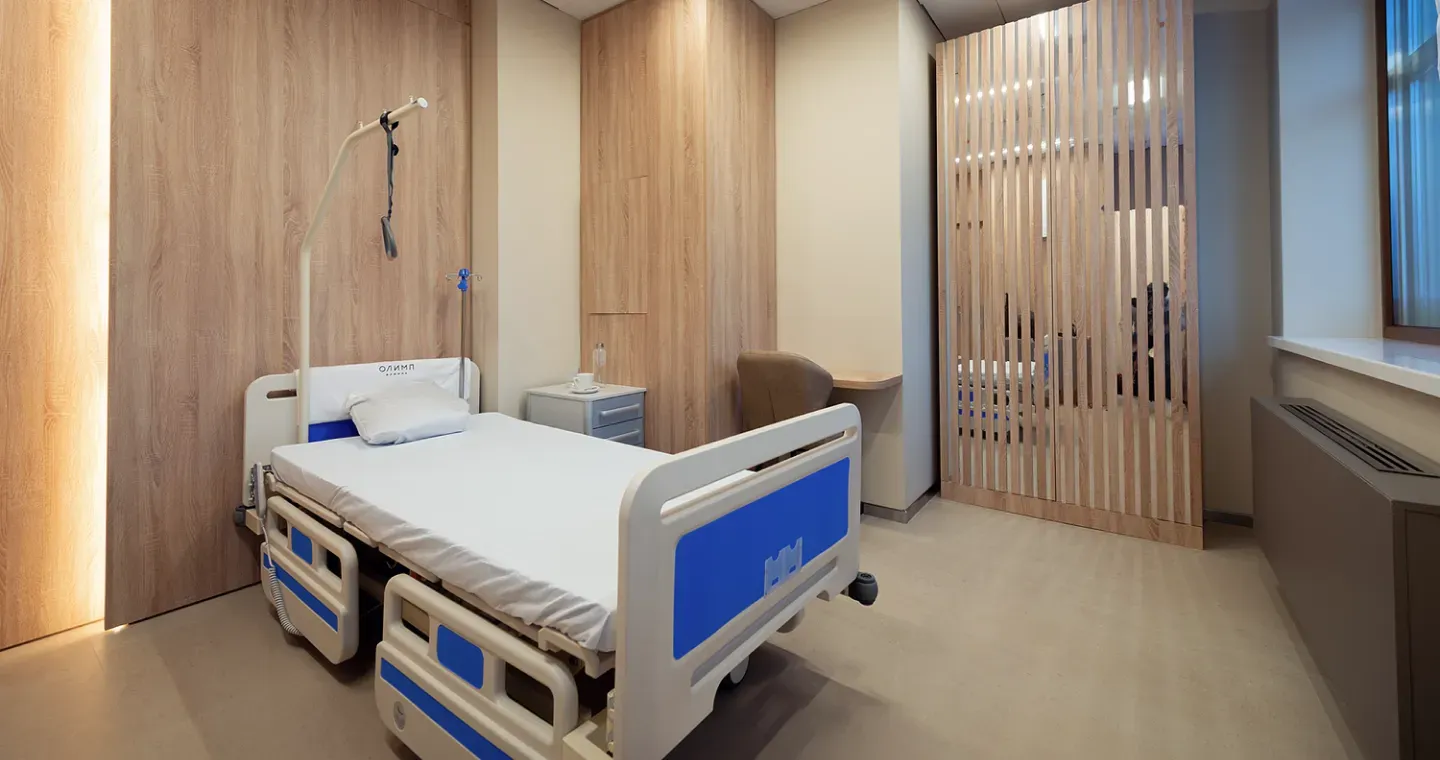Osteosynthesis of the bones of the fingers of the hand
The osteosynthesis of the bones of the fingers of the hand due to the comparison and fixation of the ends of the fragments ensures rapid rehabilitation and proper fusion.

A finger fracture, including in combination with soft tissue injuries, is one of the most common injuries to the hand. Osteosynthesis allows you to restore the bone anatomy of the hand.
Clinical blood and urine tests X-ray of the fingers of the hand MRI or CT scan for detailed diagnosis of fractures Consultation with a therapist and an anesthesiologist
The surgeon makes a small incision in the skin above the site of bone damage and performs osteosynthesis, that is, fixes the bones with special implants such as plates, bolts, nails and wire.
Metal screws, plates or rods for fixing bones Surgical instruments for precise alignment of bone fragments X-ray equipment
After surgery, pain and swelling may appear in the area of the hand. The doctor will prescribe analgesics and possibly anti-inflammatory drugs. To restore mobility in the hand, a rehabilitologist may prescribe physiotherapy.
Benefits
Long-term results
After successful osteosynthesis, the bones of the fingers of the hand often fuse and retain their structure for a long time.
Minimal invasiveness
Modern methods of osteosynthesis make it possible to make smaller incisions in the skin and minimize the traumatic nature of the operation.
Reducing the risk of complications
Osteosynthesis reduces the risk of various complications, such as improper bone fusion.
Consultation
The doctor will conduct a detailed examination of your hand and take X-rays to determine the nature and extent of the injury or fracture.

Operation
The surgeon makes a small incision in the skin above the site of bone damage and performs osteosynthesis, that is, fixes the bones with special implants such as plates, bolts, nails and wire.

Rehabilitation
After surgery, you may experience pain and swelling in the area of the hand. The doctor will prescribe you analgesics and possibly anti-inflammatory drugs. You may be recommended physical therapy to restore mobility in the hand.

Frequently Asked Questions
In which cases is osteosynthesis of the bones of the fingers of the hand indicated?
How long does it take to recover from osteosynthesis?
Under what anesthesia is the operation performed?
Didn't find an answer to your question?
You can describe your problem in detail and ask a question to the doctor. He will answer you and help you find a solution
Врачи
Смотреть всех врачейCandidate of Medical Sciences. Orthopedic Trauma Surgeon. Deputy Chief of Surgery.
Candidate of Medical Sciences. Hand Surgeon, Orthopedic Trauma Surgeon, Microsurgeon. Head of the Hand and Microsurgery Center. Member of the Interregional Public Organization “Hand Surgery Society”.
Orthopedic Trauma Surgeon
Hand Surgeon, Orthopedic Trauma Surgeon, Plastic Surgeon, Microsurgeon. Senior Physician of the Hand and Microsurgery Center. Member of the Interregional Public Organization “Hand Surgery Society”.
Doctor of Medical Sciences, Professor. Hand surgeon, orthopedic trauma surgeon, plastic surgeon, microsurgeon. Scientific Director of the Hand and Microsurgery Center. Chairman of the Interregional Public Organization “Hand Surgery Society”
Hand Surgeon, Plastic Surgeon, Microsurgeon. Senior Physician of the Hand and Microsurgery Center.
Orthopedic trauma physician, hand surgeon, microsurgeon
Orthopedic traumatologist for children
Indications and contraindications
Indications
Fracture of the bone of the finger
Violation of the integrity of the distal, middle or main phalanx of the finger
Expected effect
Restoration of structure and function
Osteosynthesis allows you to accurately restore the bones and structure of the fingers of the hand after injury or fracture.
Reducing pain and discomfort
Osteosynthesis can significantly reduce pain and discomfort in the patient after injury or injury.
Fixation of fractures
Osteosynthesis makes it possible to stabilize and fix fractures of the fingers of the hand, ensuring the correct alignment of bone fragments and contributing to faster healing.
Restoration of the anatomical structure
Restoration of the anatomical structure of the bones, which can contribute to the restoration of mobility, functionality and appearance of the fingers.
Similar referral activities
Arthroscopy of the ankle joint
Ankle arthroscopy is a minimally invasive surgical procedure used to diagnose and treat various diseases and injuries of the ankle joint.
Arthroscopy of the knee joint
Knee arthroscopy is a minimally invasive surgical procedure for the diagnosis and treatment of injuries and diseases of the knee joint. It allows examining the joint for damage and eliminating the identified defects.
Arthroscopy of the elbow joint
Arthroscopy of the elbow joint is a minimally invasive surgical intervention that allows for accurate diagnosis and simultaneous treatment of joint injuries.
Arthrodesis of the joints of the fingers of the hand
The destruction of the joints of the fingers of the hand is accompanied by pronounced pain and impaired functions. Arthrodesis is a surgical intervention in which the affected joint is completely immobilized, which relieves pain and progression of inflammation.
Arthroscopic revision of the cystic joint
The condition of the wrist joints determines the functioning of the hand. Arthroscopic revision is a minimally invasive diagnostic procedure that assesses the condition of the joint tissues, which is necessary for planning subsequent treatment.
Arthroscopy of the shoulder joint
Arthroscopy of the shoulder joint is a minimally invasive surgical procedure designed to diagnose and treat various diseases and injuries of the shoulder joint.








